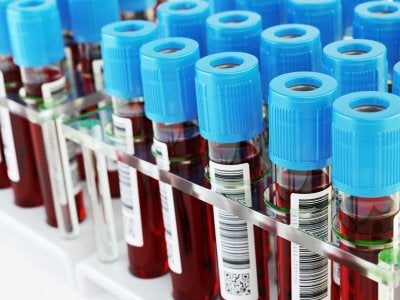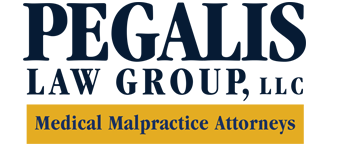-
Spotlight on Medication Errors

It would be hard to overstate the importance of avoiding medication errors. If a patient does not take the proper dosage of a medication or is given the wrong prescription, it can have serious consequences for his or her health and possibly their life. It’s always a good time to check that you know all of the important information you should about any medications you are taking. Here’s how you can help prevent medication errors:
Get instructions from your physician.
It’s important to get thorough instructions from your physician or your pharmacist on how to take your medication. You should know what dosage you should be taking, when to take it, and how many days you should be taking it for. If anything is unclear to you, be sure to ask for clarification.Ask about drug interactions.
Your physician should be made aware of any other medications you are taking, so that you will not be prescribed a drug that may have a dangerous interaction. Make sure that you also know about any possible side effects the medication may have, and whether it interacts negatively with any foods, such as juices or alcohol.Make sure you know the medication name.
Confusing one medication with another is a common mistake, and it can be an extremely serious one. Many medications have names that sound similar, so it’s important to make sure that you know both the generic name and the brand name of the medication you are taking.If you are concerned about a misdiagnosis or possible medical error, contact the law firm of Pegalis & Erickson LLC in New York. For 46 years, we have advocated for people of all ages, in order to help our clients financially and make healthcare safer for everyone. You can reach us today by calling (516) 684-2900.
Attorney Advertising
-
Spotlight on Preventable Emergency Room Errors

When you go to the emergency room, it’s only natural to assume that you will be well taken care of by conscientious care providers. Unfortunately, mistakes do happen—and even experienced healthcare professionals can make them. In fact, emergency room errors are far more common than you might assume. These are some of the types of preventable emergency room errors that are most likely to occur.
Medication Errors
In the atmosphere of an emergency room, it’s entirely possible for medication errors to happen—and the results can be serious. A patient may receive a dosage that is too high, one that is too low, or even the wrong medication entirely. If you’re not getting the correct level of medication—or worse, a medication that isn’t intended for you—it can make your condition worse.Misdiagnosis
If you aren’t properly diagnosed when you get to the emergency room, you won’t get the treatment you need. Here’s a possible scenario: A patient’s appendicitis is mistaken for ordinary stomach pains, and he or she is prescribed medication and discharged instead of an emergency appendectomy to avoid a burst appendix and possible sepsis.Misreading Test Results
When a test is given to you at an emergency room, it’s important that the staff reading it does so properly. Tests are essential for determining the nature of your condition so you can proceed with the appropriate treatment. If your test results are misread or misinterpreted, and you are discharged from the emergency room, it can result in serious injury or even death. For example, if a radiologist fails to read a chest X-ray properly that shows developing pneumonia, and you are discharged without proper medication, it can lead to sepsis and even death.If you are concerned about a misdiagnosis or possible medical error, contact the law firm of Pegalis & Erickson, LLC in New York. For 45 years, we have advocated for people of all ages, in order to help our clients financially and make healthcare safer for everyone. You can reach us today by calling (516) 684-2900.
Attorney Advertising
-
Steps to Take If a Diagnosis Is Inconclusive
When you have a clear-cut diagnosis, your course of action may seem clear. What happens, however, when your diagnosis is inconclusive? Living with an uncertain medical verdict can be extremely stressful, because you may have no way of knowing when you will get a more conclusive diagnosis. A recent study found that as many as 12 million people in the United States get an inconclusive—or faulty—diagnosis annually. Here are some steps to take after you have received an inconclusive diagnosis:
 Be proactive, not passive.
Be proactive, not passive.
Many patients assume that the medical practitioners who see them always know best, and that they are always in safe hands. Unfortunately, this isn’t always the case. By being an active, engaged, and informed patient, you can help to ensure that you get quality care.Seek out a second opinion.
If your first diagnosis was inconclusive, it goes without saying that you should try again. Go to a different doctor for a second consultation. To ensure objectivity, it’s best to avoid telling this doctor what the first diagnosis was, at least until you have received the second opinion.Talk to your primary care physician.
You should always start by seeing your usual doctor, who will have a better sense of your overall health than anyone else will. While your diagnosis may be made by a specialist, it’s still important to keep your primary care physician in the loop.Keep yourself informed.
In today’s world, it’s easier than ever for patients to get educated about their health and get the accurate information they need to make smart choices. Always do your research before going to any medical practitioner so you’ll be better equipped to ask useful questions.If you are concerned about a misdiagnosis or possible medical error, contact the law firm of Pegalis & Erickson, LLC in New York. For 45 years, we have advocated for people of all ages, in order to help our clients financially and make healthcare safer for everyone. You can reach us today by calling (516) 684-2900.
-
Preventing Medication Errors at Home and in the Hospital
 Mistakes happen in every walk of life, but when they come in the form of medication errors, the consequences can be devastating. While many of us depend on our healthcare providers to protect us from medication errors, patients also need to be proactive about protecting themselves. These are some of the steps you can take to reduce the risk of medication errors, both at home and when you’re in a medical facility:
Mistakes happen in every walk of life, but when they come in the form of medication errors, the consequences can be devastating. While many of us depend on our healthcare providers to protect us from medication errors, patients also need to be proactive about protecting themselves. These are some of the steps you can take to reduce the risk of medication errors, both at home and when you’re in a medical facility: Keep a personal medications list.
It’s imperative that you keep a complete list of all medications you are currently taking, and bring it along with you to every medical appointment. Include the name of the medication and your prescribed dosage. You should also include any nutritional supplements or over-the-counter medicines you are taking, any allergies you are aware of, and any other pertinent information.Review your medications with your doctor.
Before you begin taking a new medication, review its prescribed use with your doctor or nurse. Make sure that a trusted loved one also has access to this information. Don’t forget to update your medications list whenever you need to make a change.Check expiration dates routinely.
All medications come with an expiration date, and taking expired medicines can result in subpar treatment or even serious side effects. Check the labels of all the medications you are taking on a regular basis, and dispose of any medications that are past their expiration dates. The FDA recommends that you remove any personal information from containers and seal medicines in plastic bags before throwing them out.Pegalis & Erickson, LLC, has been providing legal assistance to people whose lives have been disrupted by medical malpractice for nearly 45 years. We have won thousands of verdicts and settlements over the years on behalf of our clients. Call our office in Long Island, New York, today at (516) 684-2900 to schedule a free initial consultation.
-
Surprising Facts About Missed and Delayed Diagnoses
When most people go to the doctor, they bring with them the assumption that they will find out if there is anything wrong with their health. Unfortunately, this isn’t always the case. It is nowhere near as rare as you might assume for medical practitioners to fail to diagnose a serious health problem—or to diagnose it too late. Here are some facts that might surprise you:
 Diagnostic errors are extremely common. According to a recent study by the Institute of Health, about 5 percent of all Americans who visit a medical professional in the course of a year will receive a faulty diagnosis. This adds up to about 12 million people. The study also observed that the number of diagnostic errors appears to go up over time, as medical treatments increase in complexity.
Diagnostic errors are extremely common. According to a recent study by the Institute of Health, about 5 percent of all Americans who visit a medical professional in the course of a year will receive a faulty diagnosis. This adds up to about 12 million people. The study also observed that the number of diagnostic errors appears to go up over time, as medical treatments increase in complexity. Almost everyone will receive at least one wrong diagnosis. While 5 percent may not sound like an enormous amount, the number of people who are wrongly diagnosed multiplies with each passing year. The Institute of Health study found that most people living in the U.S. will experience at least one late—or flat-out wrong—diagnosis at some point in their lives.
Diagnostic errors can be hard to identify. It’s easy to assume that you’ll know when you’ve been wrongly diagnosed—but that isn’t necessarily true. Many people do not discover for years that they have gotten the wrong diagnosis. Diagnosing a patient is a challenging and multifaceted process, and there are many points at which the diagnosis can go astray. In many cases, the issue is lack of proper communication between medical professionals and their patients.
If your life—or the life of a loved one—has been disrupted by a delayed diagnosis, you may have a medical malpractice claim. Talk to one of the attorneys at Pegalis & Erickson, LLC, for legal guidance that will help you protect your rights. You can set up a free consultation at our office in Long Island, New York, by calling us at (516) 684-2900.
-
Spotlight on Infectious Disease Errors
 If you have an infectious disease, being misdiagnosed—or diagnosed too late—can have serious consequences. If an infectious disease isn’t treated and worsens, the changes in your life may be irreversible. That’s why it’s important to be a proactive patient and take the initiative to help ensure that your diagnosis is accurate. Be open and communicative with the healthcare providers you interact with, and don’t hesitate to contact them if your health status changes. If you aren’t satisfied with your current doctor, find a new one. Keep your own medical records, including a list of all your appointments, a record of your symptoms and when you experienced them, and a list of all your medications. Having that information at your fingertips will also be useful for any medical practitioner who is treating you, and it can help to increase the chances of positive patient outcomes.
If you have an infectious disease, being misdiagnosed—or diagnosed too late—can have serious consequences. If an infectious disease isn’t treated and worsens, the changes in your life may be irreversible. That’s why it’s important to be a proactive patient and take the initiative to help ensure that your diagnosis is accurate. Be open and communicative with the healthcare providers you interact with, and don’t hesitate to contact them if your health status changes. If you aren’t satisfied with your current doctor, find a new one. Keep your own medical records, including a list of all your appointments, a record of your symptoms and when you experienced them, and a list of all your medications. Having that information at your fingertips will also be useful for any medical practitioner who is treating you, and it can help to increase the chances of positive patient outcomes. If you believe you have been misdiagnosed, it’s time to contact Pegalis & Erickson, LLC. You can reach our office in Long Island, New York by calling (516) 684-2900.
Many people do not discover for years that they have gotten the wrong diagnosis. Diagnosing a patient is a challenging and multifaceted process, and there are many points at which the diagnosis can go astray. In many cases, the issue is lack of proper communication between medical professionals and their patients.
If your life—or the life of a loved one—has been disrupted by a delayed diagnosis, you may have a medical malpractice claim. Talk to one of the attorneys at Pegalis & Erickson, LLC, for legal guidance that will help you protect your rights. You can set up a free consultation at our office in Long Island, New York, by calling us at (516) 684-2900.
-
What Are the Benefits of Seeking a Second Opinion After a Diagnosis?
It isn’t always necessary to get a second opinion. Common, relatively minor medical problems like sinus infections and pink eye have straightforward treatment regimens that are widely accepted by medical professionals. But in some cases, a second opinion can prove invaluable. Medical malpractice lawyers recommend getting a second opinion after a diagnosis of any potentially life-threatening, disabling, complex, or rare condition.
Second opinions reduce the risk of a misdiagnosis.
Doctors have advanced education and training, but they’re still capable of making mistakes. It’s possible for another doctor to see something that the original physician overlooked. By talking to another physician, you’ll learn whether the initial diagnosis was made without the benefit of various lab tests and imaging scans that you should have had. The second doctor might even discover that appropriate tests were ordered, but were somehow left out of your records, and so they weren’t considered when the initial diagnosis was made. You’ll discover the original doctor’s level of confidence in the diagnosis.
You’ll discover the original doctor’s level of confidence in the diagnosis.
Good doctors aren’t offended when their patients inform them that they are seeking a second opinion. On the contrary, most doctors should welcome the idea, as it means their patients are proactive, and they are truly getting involved in their own healthcare. Plus, a doctor who has full confidence in his or her diagnosis will also have confidence that another doctor will confirm the diagnosis. If your doctor attempts to dissuade you from talking to another physician, this could be an indicator that getting a second opinion is imperative, and also that you may want to switch doctors.You’ll get more information about your diagnosis.
Even if the initial diagnosis is correct, getting another opinion can still be beneficial. Some patients talk to another physician when they aren’t fully satisfied with the information given to them. Another doctor can help address your questions more thoroughly, and he or she can discuss your treatment options with you.Medical negligence lawyers serving patients in New York urge families to seek a second opinion after any major diagnosis. Unfortunately, it’s still possible to be affected by medical malpractice even after taking steps to protect yourself. If you feel you could benefit from our legal advocacy services, please don’t hesitate to call us at (516) 684-2900.
-
Spotlight on Common Medical Negligence Risks in 2017
Medication errors, birth injuries, and delayed diagnoses are all common types of medical malpractice that probably won’t ever be eliminated entirely. Improvements in hospital protocols and medical technology can help manage some of the risks. But unfortunately, advanced technology also opens the door to new types of medical negligence. Here are some of the top risks to watch out for during 2017.
Electronic Heal th Records (EHRs)

The days of paper patient charts are officially over. These days, doctors are more likely to consult a laptop or iPad in the exam room. Electronic health records (EHRs) document, manage, and share patient information in real time with other authorized users. This means that a patient’s lab results can be made instantly available to his or her primary care physician. When used properly, EHRs can be highly effective in coordinating a patient’s care. Unfortunately, not all doctors are adapting well to the digital age. If a healthcare provider has access to a patient’s EHR, but fails to refer to the vital information included in it, it’s possible to make a crucial error. For instance, the doctor might prescribe a medication a patient is allergic to or which is incompatible with other medications the patient is taking.
Patient Identification
Despite technological advances, errors in patient identification are still among the most common types of hospital negligence. When the wrong information is attached to the wrong patient record, it’s possible for doctors to administer incorrect treatment or even to perform the wrong sort of surgery. Hospitals have a responsibility to take reasonable preventive measures, such as by implementing strict registration desk protocols. Hospitals are also responsible for verification of patient’s identity wrist bands prior to administration of medications.Here at Pegalis & Erickson, LLC, we understand the confusion and mixed feelings that can follow an act of medical malpractice in New York. Our professionals can help you understand the issues involved with your case, and sort through your options for legal recourse. Call us at (516) 684-2900.
-
Recognizing Instances of Hospital Malpractice
Medical malpractice can have life-altering consequences for patients. An attorney can help affected patients pursue the compensation they need to move forward with their lives. It’s possible to name a hospital as a defendant along with one or more healthcare providers. For instance, a medical malpractice lawyer may present evidence that shows the hospital was negligent in failing to staff sufficient numbers of qualified healthcare personnel.
 This act of hospital malpractice can be particularly serious in the emergency department. If there aren’t enough ER doctors, or the ER doctors aren’t adequately qualified, substandard treatment or delays in treatment can jeopardize a patient’s health. A hospital might also be found liable for neglecting to refer patients for follow-up care with their primary doctors or a specialist.
This act of hospital malpractice can be particularly serious in the emergency department. If there aren’t enough ER doctors, or the ER doctors aren’t adequately qualified, substandard treatment or delays in treatment can jeopardize a patient’s health. A hospital might also be found liable for neglecting to refer patients for follow-up care with their primary doctors or a specialist. Patients who have been affected by acts of medical negligence near New York are invited to contact Pegalis & Erickson, LLC at (516) 684-2900. We are a malpractice law firm committed to empowering patients and their families.
-
Is Labor Induction Dangerous?
Labor induction is sometimes required if delaying birth could be dangerous to you or your child. In some pregnancies, a doctor may recommend labor induction for convenience, especially if you live far from the hospital. Although labor induction is a common procedure, it does carry risks. When medical mistakes are made before or during induction, those risks increase for both you and your child. Here are some risks of labor induction:
Increased Need for C-Section
After labor induction, the risk of needing a C-section increases. First-time mothers whose cervixes have not dilated appropriately may need a C-section after induction. Having a C-section introduces more risks into the delivery and recovery process, including an increased risk of infection for both you and your baby. It also extends the time it takes to recover from giving birth. Reduced Heart Rate
Reduced Heart Rate
When labor is induced, the medication used can cause many contractions. In addition to being painful, having too many contractions can lower your baby’s heart rate by reducing the supply of oxygen to the baby’s brain. Low heart rate and low oxygen levels can lead to birth injuries and other complications that can have lifelong effects for your child if there was a lack of proper medical monitoring and treatment.Increased Risk of Post-Delivery Bleeding
Inducing labor increases the risk of a serious condition called uterine atony, which causes dangerous hemorrhaging. Uterine atony occurs when the uterus doesn’t contract properly after giving birth. Labor induction increases the risk of uterine atony which happens more often after induction. Do you think you experienced an avoidable complication during labor induction? Do you believe your labor was unnecessarily induced, putting you at risk? Contact our experienced medical malpractice attorneys in New York at Pegalis & Erickson, LLC. If you have concerns please call us at (516) 684-2900.
Recent Posts
Popular Posts
categories
- Uncategorized
- Infographic
- Patient Safety
- Patient Health
- Stillbirth
- Birth Injuries
- Medical Malpractice
- Medical Negligence
- Event
- Erb's Palsy
- Injury
- ER
- Video
- Cancer Misdiagnosis
- Medication Errors
- Cerebral Palsy
- Medical Negligence Lawyer
- Anesthesia Injuries
- Brachial Plexus
- Prostate Cancer
- About Us
- Men's Health
- Skin Cancer
- Breast Cancer
- Misdiagnosis
